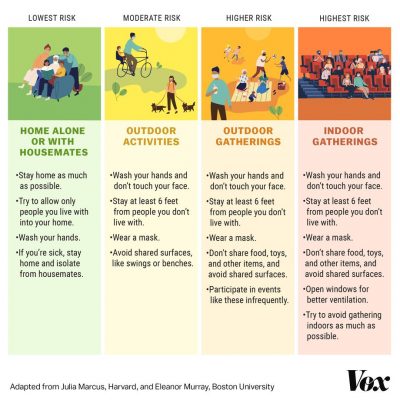Things To Do The First Week After You Move

Serving South Florida

Filed under: Blog, Boca Raton real estate, Down Sizing, Exclusive Buyer Agency, Exclusive Buyer Agent, First Time Homebuyers, Florida Real Estate, Home Buyer Advice, Home Buyers, Home Maintenance, Homebuyer Advice, House Closings, Real Estate, real estate news, Relocation, South Florida Real Estate by Kim Bregman
Comments Off on Things To Do The First Week After You Move

Filed under: Blog, Boca Raton real estate, Down Sizing, Exclusive Buyer Agency, Exclusive Buyer Agent, First Time Homebuyers, Florida Real Estate, Home Buyer Advice, Home Buyers, Homebuyer Advice, International Home Buyers, Real Estate, real estate news, Relocation, South Florida Real Estate by Kim Bregman
Comments Off on Affordable Moving- Cost Effective Way to Ship Boxes

Our living spaces greatly influence our physical health – as well as our emotional state of mind (especially during his time). So it will continue to be important to create environments that stimulate our senses in a good way, improve relaxation, and have health and wellness benefits to the people using them. Here are a few ways of living that will be popular.
When it comes to colors this year, we’re seeing the return of earth tones in a wide spectrum, from cream to terra cotta. Expect to see decor that conveys softness, with plenty of light colors, especially pinks, beiges and other neutral tones, for a Zen look promoting rest, tranquility and well-being.
Nature continues its influential role in the world of decor. Vegetal hues have been in the spotlight for several seasons now, and this year we saw a lot of them, ranging from tender green to intense mint to peacock blue. Sky blue has brightened up the pastel palette.
Earth tones aren’t the only trend with staying power of late. While black is becoming less popular, blue has been replacing it. It’s a more versatile and emotionally indulgent hue well suited to sheltering at home.
Filed under: Blog, Boca Raton real estate, coronavirus, COVID-19, Down Sizing, Exclusive Buyer Agency, Exclusive Buyer Agent, First Time Homebuyers, Florida Real Estate, Home Buyer Advice, Home Buyers, Home decorating, home safety, Homebuyer Advice, Interior Design, Real Estate, Real Estate Investment, real estate news, Real estate trends, South Florida Real Estate by Kim Bregman
Comments Off on Life After COVID-19? How Interior Design will Change

Emergency Supplies that you can buy now and be prepared for any emergency in the next few months. COVID-19 cases are increasing and there may be a need for you to self-quarantine for a period of weeks. We are also in the summer months frequently occurring natural disasters—a flood, hurricane, tornado, fires, and more—and they often come with little or no warning. There are already known shortages of items in the stores and with the onset of a hurricane warming the shelves will soon be bare. Stocking up now on the right non-perishable food items will help you weather the storm (or global pandemic) with less stress knowing that you have these emergency supplies on hand for now or later.
What to Always Keep in Your Pantry
These non-perishable food items (or close to it) have lengthy expiration dates, so you can stash them away for long periods of time, even if it’s not hurricane season or tornado season. Make a list of everything in your stockpile and check expiration dates every 6 to 12 months to keep things fresh. And don’t forget to have a MANUAL can opener on hand at all times—all that food won’t be of any use if you can’t open it.
Peanut butter: A great source of energy, peanut butter is chock-full of healthful fats and protein. Unless the jar indicates otherwise, you don’t have to refrigerate after opening.
Whole-wheat crackers: Crackers are a good replacement for bread and make a fine substitute when making sandwiches.
Nuts and trail mixes; Stock up on these high-energy foods—they’re healthful and convenient for snacking during a hurricane, tornado, or other emergency.
Cereal;Choose multigrain cereals that are individually packaged so they don’t become stale after opening.
Granola bars and power bars;Healthy and filling, these portable snacks usually stay fresh for at least six months.
Dried fruits, such as apricots and raisins;In the absence of fresh fruit, these healthy snacks offer potassium and dietary fiber.
Canned tuna, salmon, chicken, or turkey;Generally lasting at least two years in the pantry, canned meats provide essential protein. Vacuum-packed pouches have a shorter shelf life but will last at least six months.
Canned vegetables, such as green beans, carrots, and peas;When the real deal isn’t an option, canned varieties can provide you with essential nutrients, making these a great hurricane food or natural disaster
Canned soups and chili; Soups and chili can be eaten straight out of the can and provide a variety of nutrients. Look for low-sodium options.
Dry pasta and pasta sauces; It might be a carb-heavy, gluten-full food, but pasta is filling, and dry pasta and jarred sauce can last on pantry shelves for months
Bottled water; You need at least one gallon per person per day. “A normally active person should drink at least a half gallon of water each day,” Andress says. “The other half gallon is for adding to food and washing.”
Sports drinks;The electrolytes and carbohydrates in these drinks will help you rehydrate and replenish fluid when water is scarce. Just make sure your sports drink of choice doesn’t come with too many additives, such as sugar or artificial sweeteners.
Powdered milk or Boxed milk; Almost all dairy products require refrigeration, so stock this substitute for an excellent source of calcium and vitamin D when fresh milk isn’t an option.
Sugar, salt, and pepper;If you have access to a propane or charcoal stove, you may be doing some cooking. A basic supply of seasonings and sweeteners will improve the flavor of your food, both fresh and packaged.
Multivitamins;Supplements will help replace the nutrients you would have consumed on a normal diet.
What to Buy Right Before an Emergency
If you’ve been given ample warning that a storm is coming, there’s still time to run to the market and pick up more hurricane food: fresh produce and other items that have shorter shelf lives. Most of these foods will last at least a week after they’ve been purchased and will give you a fresh alternative to all that packaged food..
Apples;Apples last up to three months when stored in a cool, dry area away from more perishable fruits (like bananas), which could cause them to ripen more quickly.
Citrus fruits, such as oranges and grapefruits;Because of their high acid content and sturdy skins, citrus fruits can last for up to two weeks without refrigeration
Avocados;If you buy an unripe, firm avocado, it will last outside the refrigerator for at least a week.
Tomatoes;If you buy them unripe, tomatoes will last several days at room temperature.
Potatoes, sweet potatoes, and yams;If you have access to a working stove, these root vegetables are good keepers and make tasty side dishes. Stored in a cool, dark area, potatoes will last about a month.
Cucumbers and summer squash;These vegetables will last a few days outside of refrigeration and can be eaten raw.
Winter squash:While most are inedible uncooked, winter squashes, such as acorn squash, will keep for a few months. If you’ll be able to cook during the emergency, stockpile a bunch.
Hard, packaged sausages, such as sopressata and pepperoni; You can’t eat canned tuna and chicken forever. Try stocking up on a few packages of dry-cured salamis such as sopressata, a southern Italian specialty available at most grocery stores. Unopened, they will keep for up to six weeks in the pantry.
Non-grocery Items:
Within the two-week limit, make sure you have enough toothpaste, floss, face wash, moisturizer, shampoo, conditioner, razors, shaving cream and hand sanitizer with at least 60% alcohol. It’s also good to have extra laundry detergent and hand soap at home. Stock up on face masks, hand sanitizers, toilet paper
More Food Advice for an Emergency:
Filed under: Blog, Boca Raton real estate, coronavirus, COVID-19, Exclusive Buyer Agency, Florida Real Estate, Home Buyer Advice, Home Buyers, Home Maintenance, home safety, Homebuyer Advice, Hurricane Preparedness, South Florida Real Estate, Uncategorized by Kim Bregman
Comments Off on Emergency Supplies for Quarantine or Hurricane

Rates are lower than ever; when a refinancing is done right, it can save you thousands of dollars. But not every potential refi makes the cut. Sometimes the expenses just don’t justify the potential savings.
It is time to refinance your home mortgage if the terms lower your mortgage interest rate, pay off their mortgage years earlier, or saves thousands in interest over the life of the loan. You can save serious money by refinancing your mortgage. But due to refinancing fees and expenses, not every refi makes financial sense.
COVID-19 is creating changes with lenders and how they are doing business. This is resulting in refinancing taking longer and getting stricter than it has been in the past. Although the mortgage process is considered essential as a financial transaction, depending on where you live, there may be changes related to COVID-19 involving your appraisal, rate lock and closing process.
Rates are quite low and because your home is your biggest financial investment, the equity can be very useful as a resource in times of trouble. But if you’re thinking of financing your home loan there are several steps you should take to make sure that it’s the right move for you.
How Long Do You Plan On Being In Your Home?
Being able to answer this question will help you figure out the term length you want on any refinanced mortgage; but there’s another reason asking this question …
If you plan on moving within the next 5 – 10 years, it could be worth your while to look at an adjustable rate mortgage ( ARM). You get a lower rate initially with an ARM because the rate can adjust after the teaser period. But if you move before the end of the fixed-rate time frame, you don’t have to worry about whether the rate is going up and down in the end. Additionally, your payment will tend to be lower because most adjustable rate mortgages are based on 30-year terms.
Age Of Current Loan
The age of your current loan sometimes plays a role in whether you can refinance. Even if you can refinance, it does not always make sense. When you refinance you have to pay closing costs. If you are not planning on staying in the house past the breakeven point when the savings and the additional expenses paid starts to net to overall reduced costs for home ownership, the it is not the time to refinance. You may want to accelerate buying a new home to realize the saving from lower interest rates.
Plans For Monthly Savings
If you determine that you’re going to save money by refinancing based on the rate and term you can get, make sure that you have a plan for what you’re going to do with the monthly savings in order to put yourself in a better financial position. No one knows exactly when COVID-19 is going to end and how long it will take for the economy to recover. If you can save money now, you can work on establishing the savings need should the vaccine be delayed or we continue with a longer recession
You could use your savings to build up an emergency fund. Maybe you choose to allow yourself to save money in the future by paying off high-interest debt now. You can also use this to catch up on saving for retirement if you stopped contributing temporarily while dealing with the situation caused by the virus.
It’s a very volatile market right now, so we advise all of our clients to rely on the advice of their Home Loan Expert and Financial Advisors at all times.
The Mortgage Refi Process
Approving a mortgage is a complicated process, one that requires a lender to validate a borrower’s income, check the value of the home being used as collateral and scrutinize the title history of the property.
Just as refinancing applications picked up, the coronavirus pandemic dramatically changed the way everyone in the mortgage industry works. Loan officers no longer go to the office. Appraisers stopped walking through houses. And no one gathers around the title company’s closing table. The process is a little slower because everybody’s working from home right now. Things that would take an hour to do are taking a day sometimes.
It is more difficult to verify a borrower’s employment. A task once dispatched with a quick call to the borrower’s human resources department now means leaving a voicemail and waiting a day or two for a response.
Meanwhile, homeowners looking to refinance may have to get in line behind buyers who need a mortgage so they can close on a house which are a priority with lenders.
The mortgage industry already had been digitizing, and lenders quickly adapted to many changes. One stumbling block, though, is that most lenders still require some documents to be signed in the presence of a legal witness and notarized. Florida allows for mobile notaries and they are busier than ever.
Sometimes, documents are being signed remotely and online and mobile notaries are not allowed yet. You need to allow time for in person notarization and overnight mailing of documents. Digital closings may be the way of the future, but we are not there yet.
What You Can Do to Secure a Smooth Refinance
Here are a few ways you can make the refi process as smooth as possible:
— Get your paperwork in order. Don’t let something simple like a missing document delay your refinance. Collect PDFs of financial documents, including pay stubs, bank statements, tax returns and retirement accounts.
— Make sure the lender will honor your rate lock. In normal times, lenders extend rate locks for 30 to 60 days, meaning you won’t have to pay more if rates go up before your loan closes. These aren’t normal times, though, and many refinances aren’t closing within 30 to 60 days, so make sure your lender is willing to extend your rate lock if your deal is delayed.
— Keep your credit score tight. Now isn’t the time to miss a payment, take on new debt or otherwise do anything to lower your credit score. Lenders are being especially strict about borrowers’ credit histories.
Filed under: Blog, Boca Raton real estate, coronavirus, COVID-19, Exclusive Buyer Agency, Exclusive Buyer Agent, Florida Real Estate, Home Buyer Advice, Home Buyers, Home Financing, Homebuyer Advice, Mortgage Information, Real Estate, Real Estate Closings, Real Estate Investment, real estate news, Refinancing, South Florida Real Estate by Kim Bregman
Comments Off on Should You Refinance During The COVID-19 Situation?


Since COVID-19 lock downs began in the US, most Americans have drastically changed their patterns: following instructions to stay home, limiting almost all contact with others, and venturing out only for essential trips and exercise. Americans are getting tired of staying inside. All states have re-opened at different levels. As states begin to ease social distancing restrictions, people are beginning to have more options. Between those wanting to patronize newly reopened businesses or socialize in person, and more employers calling people back to work. The safest thing anyone can do in the middle of the Covid-19 outbreak is still the same as it was a few months ago: Stay home as much as possible to avoid catching or spreading the virus until there is a vaccine or effective treatment, or until the pandemic otherwise ends. That especially applies to people who are sick, who should do all they can to avoid exposing others to the coronavirus. But for many people, it’s really not clear which kinds of gatherings are safe and which aren’t. And that uncertainty can spark anxiety. Fortunately, health experts know more about the COVID-19 than they did when the lock downs began, and they can point us to different levels of risk as we begin to reengage. First and foremost, the advice that has been repeated for much of the past few months remains true: Your home is still the safest place to be during this pandemic. You should continue trying to stay home as much as possible, because the virus is still circulating at a very high rate in many communities. But whether you need to for work or you’re simply tired of looking at your home’s walls, there are ways to mitigate risk when you go out. if you want to do something outside your home, it’s better to take advantage of the fresh air and do it outdoors rather than indoors when possible. If you want to meet with certain friends or family, consider a pact with them in which you’ll both agree to minimize or eliminate contact with anyone else, to reduce overall exposure for everyone involved. The most important thing: Avoid indoor spaces that bring you within 6 feet of people from outside your household for long periods. “It is about density. It is about duration of contact,” according to Cyrus Shahpar, a director at Resolve to Save Lives. So if you’re having friends over, consider hanging out outside (and keep it to a small group). If you want to eat at a restaurant, look for outdoor seating. If you’re going for a run, go to the park, beach, or streets instead of the gym. After some mixed messaging from federal officials early on in the COVID-19 outbreak, there is widespread consensus that people should wear masks when they go out — a surgical or medical mask if they have one, a cloth one if they don’t. The Centers for Disease Control and Prevention recommends masks “in public settings where other social distancing measures are difficult to maintain (e.g., grocery stores and pharmacies), especially in areas of significant community-based transmission.” But other experts — and, in some cases, government mandates — go further, saying you should wear a mask in just about any setting outside your home as long as the pandemic continues. The primary reason for a mask is to stop transmission from the wearer to others, particularly from people who are infected but asymptomatic and therefore might not even know they’re infected. If you wear a mask, you’re less likely to spray virus-containing droplets on surfaces or other people when you breathe, talk, sing, laugh, sigh, snort, cough, sneeze, and whatever else you might do with your mouth and nose. One of the common pieces of advice throughout this pandemic has been to keep 6 feet or more away from people you don’t live with, summarized by the catchy slogan “6 feet distance determines our existence.” The closer you are to someone, the likelier they are to shed their coronavirus all over you, and vice versa. Whether you’re leaving your home because you have to for food or work, or you’re going out because you can’t stand the sight of your apartment anymore, one way to minimize risk is to space out all your trips. With every venture outside, you are putting yourself at risk of contracting COVID-19 in a world that’s still engulfed by a pandemic. ALWAYS wash your hands frequently, and don’t touch your face. If you’re going to frequently venture far outside your home, that advice is especially pertinent. Take hand sanitizer to use religiously and wear gloves whenever possible. Stay Safe, Stay Healthy, Stay Home Whenever Possible |
Filed under: Blog, coronavirus, COVID-19, Exclusive Buyer Agency, Exclusive Buyer Agent, Florida Real Estate, Home Buyer Advice, Home Buyers, home safety, Homebuyer Advice, Uncategorized by Kim Bregman
Comments Off on COVID-19: Weighing the Risks of Going Out

Filed under: Blog, Boca Raton real estate, Down Sizing, Exclusive Buyer Agent, First Time Homebuyers, Florida Real Estate, Home Buyer Advice, Home Buyers, Home decorating, Homebuyer Advice, Interior Design, Real Estate, Real estate trends, Relocation, South Florida Real Estate by Kim Bregman
Comments Off on How to Arrange Furniture- 10 Basic Rules

Pets are an important part of our family, and one of the bright spots in the stay-at-home mandates due to COVID-19 is that we get to spend more time with them. The pets of the world are probably delighted with that aspect of the current crisis.
Understandably, many owners have questions about their pet’s susceptibility to COVID-19 and how it might affect their personal health. Just as medical experts are learning more each day about how the new coronavirus, COVID-19, impacts the health of humans, they’re also studying its effects on animals. And what they’ve discovered is that although the virus primarily spreads from person to person, it can spread from people to pets in some situations.
A small number of pets worldwide, including cats and dogs, have tested positive for COVID-19, “mostly after close contact with people with COVID-19,” the Centers for Disease Control and Prevention (CDC) says.
Cats appear to be the most susceptible to SARS-CoV-2 and can even develop symptoms of the disease, preliminary studies show. They also seem to be able to spread the virus to other cats. (Laboratory studies have found that ferrets and golden or Syrian hamsters can spread the infection to other animals of the same species as well.)
How to protect your pets
Keeping your four-legged family members safe during the coronavirus pandemic looks a lot like how you might go about protecting the humans in your family. Physical Distancing is a key preventative measure. Public health experts recommend keeping your pet away from other people and animals outside the household.
Avoid dog parks and public spaces where dogs gather to play, and when on walks, keep your dog at least 6 feet from other people and animals. Cats should be kept indoors when possible to limit their interaction with other people and pets, the CDC advises. While you spend more time at home, try to dedicate more time to playing with your dog or cat. It’s a great time to bond, teach them new tricks or focus on behavior training.
If you or someone in your family is sick with COVID-19, avoid contact with your pets — this includes petting, snuggling and smooching. If possible, have another member of your household care for your pet while you are sick, the CDC says. Also: Be sure to wear a cloth face covering if and when you are around your pet, and don’t forget to wash your hands before and after touching any animal. This helps to keep you and your pet healthy.
Here are some key actions you can take to prepare and help ensure the safety and care of your pets in case you get sick:
If you are concerned that your pet has been exposed to the coronavirus, contact your veterinarian. Just like with people, it’s better to call first to limit the risk of exposing others to the virus.
Filed under: Blog, coronavirus, Exclusive Buyer Agency, Florida Real Estate, Home Buyer Advice, Home Buyers, home safety, Homebuyer Advice by Kim Bregman
Comments Off on Household Pets and COVID-19

Filed under: Blog, Boca Raton real estate, coronavirus, Exclusive Buyer Agency, Exclusive Buyer Agent, First Time Homebuyers, Florida Real Estate, Foreign Home Buyers, Home Buyer Advice, Home Buyers, Home Financing, home Inspections, home safety, Homebuyer Advice, House Closings, International Home Buyers, International investors, Real Estate, Real Estate Closings, Real Estate Investment, real estate news, Relocation, South Florida Real Estate by Kim Bregman
Comments Off on COVID-19 Real Estate Home Buying Process

The novel coronavirus (COVID-19) has put a stop to the normal routines of everyday life both in the U.S. and abroad. And while social distancing is the course of action to take until told otherwise, moves aren’t always something that can wait. Real estate is considered an essential service in all states and there are many services providers to assist you in facilitating a move to a new home.
By taking extra safety precautions and minimizing social contact, you can still move safely. If you are about to move, you can still pull it off with a little extra planning and a few precautionary steps.
Here are some tips for making your move as safe, seamless and stress-free as possible.
There have not been any notable shutdowns of service among major moving companies. That being said, decisions about closures may be left to individual franchise owners. If you have already scheduled your move and haven’t heard anything, assume that your moving company is still providing services unless told otherwise, but still call just to confirm.
If you’re worried about moving during a pandemic for a move that is still upcoming and for which you haven’t scheduled movers, it’s hard to say what will and will not be available in the months to come. For now, continue to do research on companies and ask directly what steps are being taken when you reach out. What has changed at this point is largely going to be related to the customer experience itself, including frequent hand washing among movers and no physical contact between movers and clients.
If you need to select a moving company, ask for a virtual quote and see if the company offers fully contactless service. Forgo handshakes, for obvious reasons. A smile and a generous tip (sent through Venmo, PayPal or another contactless digital platform) are a welcome substitute. These companies have virtual estimate procedures available for competitive quotes
Moving companies are taking the coronavirus pandemic very seriously. To that end, companies across the country have put into place protocols designed to protect their employees and their customers. These include:
All of these practices help ensure that moving services can remain available in a safe way.
| Company | Status | Additional info |
| AmeriFreight | Open | Learn more |
| Montway Auto Transport | Open | Learn more |
| Sherpa Auto Transport | Open | Learn more |
| Ship a Car Direct | Open | Learn more |
| uShip | Open | Learn more |
| Company | Status | Additional info |
| Allied Van Lines | Open | Learn more |
| American Van Lines | Open | Learn more |
| Expedia Van Lines | Open | Learn more |
| First National Van Lines | Open | Learn more |
| International Van Lines | Open | Learn more |
| Interstate Moving & Relocation Group | Open | Learn more |
| North American Van Lines | Open | Learn more |
| PODS | Open | Learn more |
| Silver Star Moving Group | Open | Learn more |
| United Van Lines | Open | Learn more |
Same as moving companies, major storage companies continue to run operations. What you might be able to expect however is limited hours of accessibility and/or a reduction in the number of customers who are able to access their units at any one time. Storage companies should also be following proper hygiene practices, including sanitization of access pads and the requisite six feet or more of space between customer and customer and customer and employee.
| Company | Status | Additional info |
| CubeSmart | Open | Learn more |
| Extra Space Storage | Open | Learn more |
| Public Storage | Open | Learn more |
The process of a DIY move looks pretty much the same now as it did before COVID-19, minus the ability to have a couple friends come over and lend a hand in exchange for pizza. Some additional things that you will want to do however include keeping hand sanitizer, soap, and paper towels accessible at all times, we well as making a detailed plan for both your departure and arrival.
Major rental truck companies continue to be in service, as they are considered essential for transportation and personal mobility needs. Again, what may be different is the experience, since companies like Enterprise and U-Haul have put into place their own protocols for physical distancing. This means that your pick-up and drop-off location may not be at the branch office, and that you’ll have to make your reservation online or over the phone instead of in person.
If you rent, talk to your current landlord about how you can safely drop off keys and collect your security deposit, and talk to your new landlord about the process for a safe move in. Putting in a blueprint of steps ahead of time will help you maintain social distancing during your DIY move and answer any questions you might have about the process.
| Company | Status | Additional info |
| Budget | Open | Learn more |
| Enterprise | Open | Learn more |
| Penske | Open | Learn more |
| The Home Depot | Open | Learn more |
| U-Haul | Open | Learn more |
One silver lining is that social distancing means that you might have more time to devote to organizing your home prior to your move and getting rid of the things you no longer want or need. If you plan on donating items like clothing, linens, furniture, shelf stable non-perishables, etc., call the place that you would like to donate to ahead of time and see what their policies are. While many people are in need during this time, it’s likely not going be quite as easy as just driving to your nearest donation center and dropping stuff of (but that doesn’t mean you shouldn’t do it).
| Company | Status | Additional info |
| 1-800-GOT-JUNK | Open | Learn more |
| College Hunks Hauling Junk | Open | Learn more |
| LoadUp | Open | Learn more |
| Waste Management Dumpster Rentals | Open | Learn more |
This is important to confirm your reservation and discuss best practices for moving day. Moving companies are putting in lots of safeguards to help protect their clients, and it helps to be on the same page as them in terms of what is expected.
You are going to want to get it right with just one trip to the store, so make sure you know exactly what you’re going to need for your move. Don’t use free or recycled moving boxes. The coronavirus can live on cardboard for as long as 24 hours, so now is not the time to be picking up free moving supplies from places that are recycling them. Boxes that you already have in your home are fine, but if you need any extras then you’ll need to go to the store and buy them new (even better if you can then purchase them through self-checkout). Better yet, order all your moving supplies online and have them shipped to your residence. Clean as you pack. Use this opportunity to sanitize your belongings, wiping items down with disinfectant. If you don’t have any, you can make one with a solution of one tablespoon bleach to one gallon of water.
Coronavirus can last a long time on surfaces, including up to 24 hours on cardboard boxes. Your movers will be wearing gloves, but for everyone’s safety you should still have your boxes packed and sitting untouched at least a day before your movers arrive.
To aid your movers in following necessary hygiene practices, be sure to leave out products that they can use while they transport your items to and from the moving truck. That includes soap and paper towels by the sink, and hand sanitizer by the door that they’ll be entering and exiting through. If you’re concerned about having enough supplies, let your moving company know so they can be sure to bring them along for use during the move.
In advance of your move, reach out to your neighbors — especially if you live in an apartment building — and share the date and time you plan to move. This gives everyone in your direct vicinity an opportunity to avoid unnecessary contact and let you know if your timing is a problem.
Be sure to deep clean and sanitize your new home before you move into it. Here are a few resources and tips to help:
CDC’s recommendations on how to clean and sanitize your home
If you have an extra minute, here are some additional things to consider
Additional resources:
Moving is stressful under the best of circumstances; this is a scary time and certainly takes moving stress to the next level. With some planning and organization, you can relocate and stay safe even in an environment with a pandemic.
Filed under: Blog, Boca Raton real estate, coronavirus, Down Sizing, Exclusive Buyer Agency, Exclusive Buyer Agent, First Time Homebuyers, Home Buyer Advice, Home Buyers, home safety, Homebuyer Advice, House Closings, International Home Buyers, Real Estate, Real Estate Closings, real estate news, South Florida Real Estate by Kim Bregman
Comments Off on Guidance for Moving During COVID-19
 Kim N. Bregman
Kim N. BregmanAll information is provided by the licensed REALTOR®/Broker/Agent. This information is not verified for authenticity or accuracy and is not guaranteed. This website is not responsible or liable in any manner for any content posted herein or in connection with our services. Information is not guaranteed and must be confirmed by the end user.
Copyright © 2025 OPTIMA PROPERTIES. All Rights Reserved. Privacy Policy | Intellectual Property Rights | Sitemap | Real Estate Website Design & Internet Marketing by Agent Image